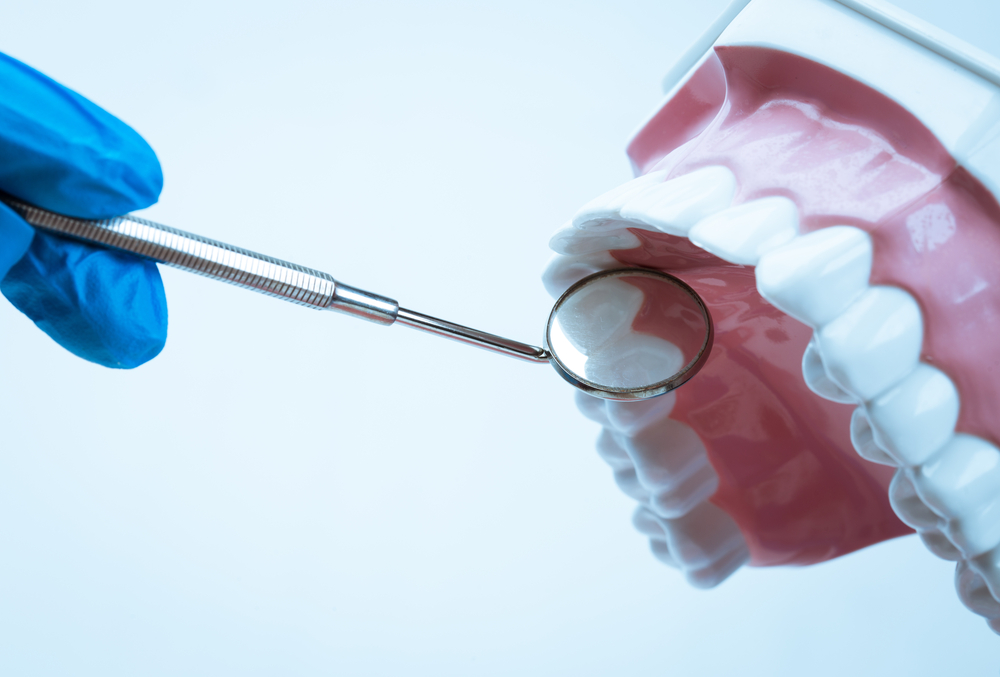Maximizing Tooth Life: Dental Inlays & Onlays

Dental inlays and onlays in dentistry are a pair of restoration procedures used to mend decayed or damaged teeth. They are frequently known as “indirect fillings” due to the fact that they are crafted in a dental lab before being attached to the tooth.
Inlays and onlays are great options compared to traditional fillings. They require less removal of the natural tooth structure and offer a longer-lasting solution for tooth restoration. In this article, we will explore how inlays and onlays can extend the life of your teeth and why they are a worthwhile investment.
Understanding Inlays and Onlays
Dental inlays and onlays are sophisticated restorative techniques that serve as a middle ground between fillings and crowns. Designed to repair teeth that are too damaged for a filling but not enough for a crown, these options provide a conservative and aesthetic solution. We will examine what inlays and onlays are, their application process, and how they offer a durable and effective alternative for tooth restoration. Understand the nuances of these procedures and their role in maintaining dental health and functionality.
Inlays
Inlays are dental solutions used to repair a tooth’s chewing surface. They are custom-made to fit the cavity’s shape and size and are typically made of porcelain, composite resin, or gold.
In contrast to traditional fillings, which are inserted directly into the cavity and then shaped, inlays are created in a dental laboratory and later bonded to the tooth. This method enables a more accurate fit and a stronger bond with the tooth.
Onlays
Onlays, known as partial crowns, are used to repair larger areas of damage. They cover one or more cusps of the tooth and are also custom-made in a dental laboratory.
Similar to inlays, onlays are bonded to the tooth for a more secure fit and can be made of porcelain, composite resin, or gold.
The Role of Onlays and Inlays in Enhancing Tooth Longevity
Now that we understand inlays and onlays let’s explore how these dental procedures can extend the life of your teeth.
Preserves More Natural Tooth Structure
One of the main benefits of inlays and onlays is that they require less removal of the natural tooth structure compared to traditional fillings. This is because they are custom-made to fit the specific shape and size of the cavity, allowing for a more precise fit.
By preserving more of the natural tooth structure, inlays and onlays help maintain the tooth’s strength and integrity. This can prevent further damage or decay and extend the tooth’s life.
Stronger and More Durable
Inlays and onlays are made of strong and durable materials, such as porcelain or gold, which can withstand the forces of chewing and grinding. This makes them a more long-lasting solution than traditional fillings, which can wear down over time and may need replacing.
Additionally, inlays and onlays are bonded to the tooth, creating a stronger and more secure bond than traditional fillings. This can help prevent the filling from falling out or breaking, which can lead to further damage or decay.
Less Prone to Staining
Traditional fillings, especially composite resin ones, can become discolored over time and may need to be replaced for cosmetic reasons. In contrast, inlays and onlays are made of materials less prone to staining, such as porcelain or gold.
This means that your inlays and onlays will maintain their natural appearance for a longer period, extending the life of your tooth and saving you from the hassle and cost of replacing them.
Custom-Made for a Perfect Fit
Inlays and onlays are custom-made in a dental lab, ensuring a perfect fit for your tooth. This helps preserve more of the natural tooth structure and creates a seal that prevents bacteria from entering the tooth and causing further damage or decay.
Additionally, the custom fit of inlays and onlays can help prevent sensitivity and discomfort, making them a more comfortable and long-lasting solution for tooth restoration.
Cost of Dental Inlays and Onlays
While it may seem like a significant investment, it is essential to consider the long-term benefits of inlays and onlays. They can extend the life of your tooth, prevent the need for more extensive and costly treatments in the future, and provide a more natural and durable solution compared to traditional fillings. Talk to your dentist to discuss financial options.
Are Inlays and Onlays Right for You?
If you have a damaged or decayed tooth, inlays and onlays may be a suitable option. Discussing with your dentist to determine the most suitable treatment approach for your particular situation is essential.
Your dentist will evaluate the extent of the damage or decay and recommend the most appropriate treatment option. In some cases, a traditional filling may be sufficient, while a dental crown may be necessary in others.
Takeaways
Dental inlays and onlays are a more conservative and long-lasting solution for tooth restoration compared to traditional fillings. They preserve more of the natural tooth structure, are stronger and more durable, and are custom-made for a perfect fit. While they may come at a higher cost, they can extend the life of your tooth and provide a more natural and comfortable solution for dental restorations.
For individuals who are considering the option of dental inlays and onlays as a potential treatment solution, it is advisable to schedule a consultation with your trusted dentist. During this consultation, your dentist will carefully evaluate your current dental health and individual circumstances to determine the most appropriate and effective dental treatment plan specifically tailored to meet your unique needs and goals.
Talking to your dentist about dental inlays and onlays can help you learn about the advantages and results. This will help you make an informed decision that fits your needs and dental plans.
Contact Ashraf Dentistry today to discuss how inlays and onlays can provide a lasting solution for your smile.
